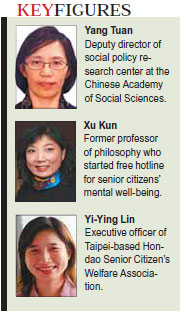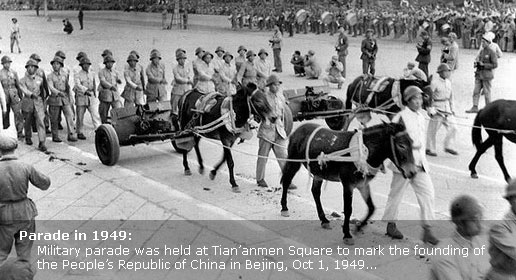60 People, 60 Stories
Seeing gray
By Lin Qi (China Daily)
Updated: 2009-09-30 07:41

It is known for having the most number of people, but not many are aware that China is also facing its first peak in a graying population.
"The question now is: Who will take care of them, and how?"
| ||||
When Fang set up Hetong's first retirement home based in an old hospital in Tianjin's suburb in 1994, almost all the institutions for the elderly were still government funded. These served the childless, disabled and mentally challenged.

As authorities boost the expansion of eldercare from families to social institutions, elderly residents today who are still capable of working and prefer to stay at home can begin to enjoy professional homecare services and support provided by neighborhood facilities as an alternative.
Fang's group also operates an old-age home in Beijing's Yuetan community under agreement with the area's neighborhood community. The institution has only 50 beds, while the neighborhood is home to 26,000 residents and nearly 12 percent of them are from empty-nest families.
The home's employees also provide homecare services like meals, haircuts, baths and company that are just a phone call away.
Pilot eldercare home services have already been rolled out in large, aging cities like Beijing and Shanghai. The municipal governments help pay for services by granting a monthly allowance of between 50 and 250 yuan to senior citizens who meet certain standards.
However, Fang warns that caretakers in the sector suffer from a generally low-level of professionalism. According to the China National Committee on Aging, the number of people working in old-age services hit 321,600 by the end of 2007. Less than one in 10 have the relevant professional qualifications.
"Other than that, we may need 10 million eligible caretakers to fulfill the duties of old-age care," he says.
Almost all of the caretakers at Hetong's five retirement homes are migrant workers.
"They quit easily because their jobs are not taken seriously by many people. They shift to other professions that don't require such demanding skills and are much less tiring," Fang says.
The public needs to change its attitude toward the profession if they want to create a better living environment for the elderly, Fang says. He hopes that urbanities in their 40s and 50s who have been laid-off and are unable to find work can join the sector. He also encourages young people to carve a niche in old-age services and upgrade its overall management.
If so, they will form a crucial part of the country's efforts to accommodate the eldery. China's basic pension insurance system had benefited 219 million people by the end of last year.
The country has plans to expand the coverage of the elderly in its extensive countryside, which would particularly benefit those who are left home alone by their migrant children in the cities.
The government also plans to introduce a more flexible system, so that its 230-million rural migrant workers can enjoy retirement benefits even if they change jobs often.
Fang is also pushing for greater health insurance.
"People can save money for possible healthcare services when they are old," he says.
"The money can also be directed to helping other people. Such a system tends to benefit everyone."
Time line
1949-1978
In 1956, the State starts offering basic welfare for the elderly who live alone and building rural homes for the elderly on a massive scale. Life expectancy rises from 39 years in 1949 to 68 years in 1978.
1980s
The population continues to rapidly age as market reforms bring about improvements in people's livelihoods.
1989
September 9 is designated festival of the elderly.
1996
Law on Protection of the Rights and Interests of the Elderly comes into effect.
1999
China enters aging society phase, with the number of people above the age of 60 exceeding 10 percent of total population.
2001
A "Millions of Seniors' Fitness Exercise Activities" campaign is launched. More than 58 million elderly engage in regular sports and fitness activities.
2005
Basic old-age insurance scheme covers 175 million people, with nearly 25 percent of them retirees. Disbursement of the old-age insurance fund hits 404 billion yuan.
2006
China publishes The Development of China's Undertakings for the Aged. It is the first white paper to give a detailed account of the direction of China's aging issue.








